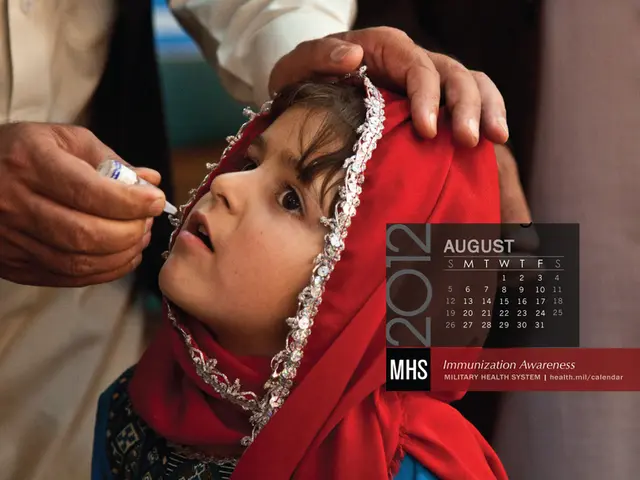Unveiling the Hidden Dangers: A Closer Look at Maternal Homicides
Published Dec 16, 2024 at 01:20 PM
Reading time: 2 minutes
Maternal homicides surpass mortality from complications, cancer, and accidents among pregnant women in the United States.
Email Facebook WhatsApp X Flipboard #### Copy Link
The grim reality of intimate partner violence, a worldwide challenge that curtails women's liberties and security, has been highlighted in a groundbreaking New York Times investigation. This investigation exposes the chilling fact that homicides are, surprisingly, the second leading cause of death for pregnant and postpartum women in the United States, overshadowed by data limitations and subsumed in broader statistics on maternal mortality.
Bearing Life, Bracing for Death: For many expectant and new mothers, the risks associated with childbirth, such as obstetric causes like pre-eclampsia, haemorrhage, or infections, pose a greater threat than murder. It's a startling reality that more pregnant and postpartum women die from murder than from car accidents, fires, drowning, or cancer. In fact, the only unnatural death causing more fatalities is accidental overdose.
The Impact of Restrictive Laws: Research indicates that laws limiting women's access to reproductive care and abortion contribute to a higher risk of homicide. This alarming revelation underscores the dangers associated with these regulations and their role in creating a hostile environment for pregnant and postpartum women.
Home is Suddenly the Most Dangerous Place: The vast majority of these fatal attacks are orchestrated within the four walls of the home, with firearms the preferred weapon of choice, shedding light on the devastating effects of the ongoing US gun violence epidemic.
In 2020, the murder rate for pregnant or postpartum women was 5.23 deaths per 100,000 live births, which is a stark increase compared to non-pregnant and non-postpartum women who had a recorded death rate of 3.87 per 100,000[1]. The rise in statistics could be attributed to changes in record-keeping, where a pregnancy checkbox on death certificates has contributed to a more visible representation of deaths through murder. However, even prior to these changes, research from individual cities, states, and subnational geographies has consistently pointed to homicide as a leading cause of death during pregnancy and the postpartum period.
The Silent Crisis that Refuses to Fade: The concerning lack of comprehensive research on maternal homicides is due to an oversight in considering these killings as indirectly related to pregnancies. As a husband, boyfriend, family member, or ex-partner is typically the perpetrator of these violent acts, domestic homicides can be attributed to a broader gender-based violence issue that demands attention, preventative measures, and proper documentation.
The investigation and previous research also reveal a disheartening fact: Black women, Hispanic women, and women from other racial and ethnic subgroups experience a significantly heightened risk of murder during pregnancy. This alarming disparity underscores the need for targeted efforts and interventions to address this issue. Younger women under the age of 25 are also more susceptible to these tragic incidents, with twice the risk of being murdered compared to non-pregnant women[2].
A Unified Approach for a Safer Future: National-level data on maternal homicides is scarce, often buried within individual state reports on maternal mortality. This highlights the urgent need for a unified, nationwide approach for tracking and addressing maternal homicides, rather than relying on researchers and journalists to piece together the data. With the right actions, we can work towards a future where every woman is safe in their journey towards motherhood.
Popular Reads
#### By Fatou Ferraro Mboup
Archaic Missouri Law Denies Pregnant Women the Right to Divorce, Even in Cases of Domestic Violence
**By Abby Amoakuh
US Hospitals Now Required to Get Explicit Consent for Pelvic Exams to Combat Gynaecological Violence
What is the Husband Stitch? Understanding the Controversial Procedure Laced with Medical Sexism
- Despite advancements in other areas such as science, health-and-wellness, mental-health, and mens-and-womens-health, the United States continues to grapple with an alarming issue: maternal homicides, which are the second leading cause of death for pregnant and postpartum women.
- The investigation reveals a concerning disparity, with Black women, Hispanic women, and women from other racial and ethnic subgroups experiencing a significantly heightened risk of murdered during pregnancy. This reflects the need for targeted efforts and interventions to address this issue.
- The ongoing gun violence epidemic in politics and general-news contributes to a dangerous environment for many expectant and new mothers, with firearms being the preferred weapon of choice in most of these fatal attacks.
- In many cases, domestic homicides are attributed to a broader gender-based violence issue that demands attention, preventative measures, and proper documentation, as a husband, boyfriend, family member, or ex-partner is typically the perpetrator of these violent acts.








